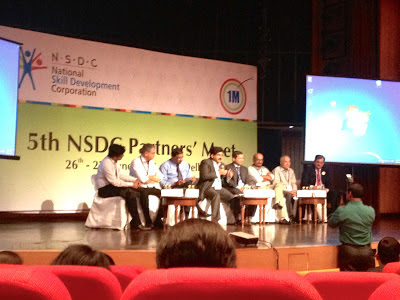- by Vaman Desai
The National Manufacturing Policy
(NMP) sounds reassuring to the perpetual skeptics of the growth of Indian
manufacturing. And at a point in time when the Indian economy is ailing, the
NMP feels like it is just what the doctor had ordered for its health.
NMP proposes setting up of
National Investment and Manufacturing Zones (NIMZ) in its ambitious quest to
increase the share of manufacturing sector from the current 17% to 25% by 2025.
It also speaks about creating 100
million much needed new jobs. 24.5 million Out of these 100 million will be
only in manufacturing sector and naturally a major part of that 24.5 million will
come from the labor-intensive manufacturing industries. Thus to realize the
supply of the required skilled labor the NMP has set up the National Skill
Development Council (NSDC) which in turn has set up skill councils in key
manufacturing industry sectors where India has comparative advantage, examples
being textile, leather, food processing etc.
However despite these provisions,
the supply of labor still remains the primary issue in labor intensive
industries. So much so that robust factories with exponential growth potential
are shutting down due to this supply shortage. In my brief stint with Pratham
till now, I have had firsthand experiences of understanding the causes
responsible for the practical constraints in the supply of labor in the labor
intensive industries. The low wages paid to the semi-skilled and the skilled
labor being the most primary of concerns amongst others such as poor living
conditions. This shortage in labor supply is not only coming as a cost to the
labor-intensive manufacturing but it is also having a multiplying effect on the
cost to the economy as a whole. The critical point to note here is that manufacturing
jobs are the primary jobs for economic growth since jobs in other fields are
created around the manufacturing sector. That a lion’s share of jobs in
manufacturing will come from labor-intensive manufacturing, in India’s case,
makes the importance labor-intensive manufacturing jobs especially paramount.


